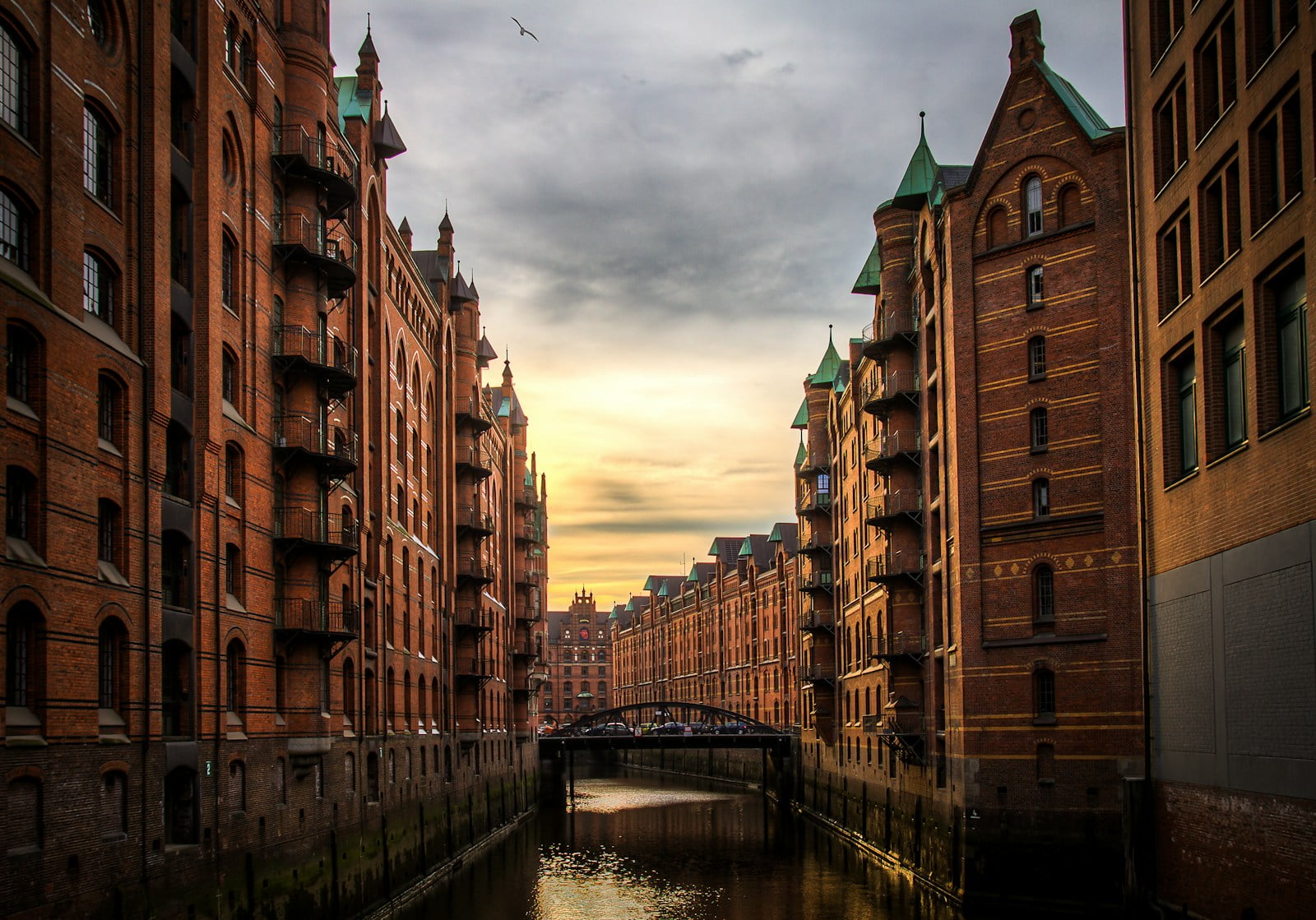Are you ready to explore the captivating blend of old and new in Düsseldorf? Discover how this German city has preserved its historic architecture while embracing modernization.
From medieval castles to Gothic churches, Düsseldorf’s architectural wonders will transport you back in time. Learn how the city’s strategic location on the Rhine River has shaped its urban landscape.
Join us as we delve into the history, culture, and significance of Düsseldorf’s historic architecture, and the efforts made to ensure its preservation for future generations to admire and cherish.
Historical Background of Düsseldorf
Discovering the historical background of Düsseldorf, you’ll find a city that has a rich and fascinating past. The historical significance of Düsseldorf is evident in its architectural heritage. Throughout its history, the city has been shaped by various rulers and influences, resulting in a diverse and unique architectural landscape.
One of the most notable periods in Düsseldorf’s history is the reign of the Counts of Berg in the 12th century. It was during this time that the city became a well-fortified outpost and the regional capital of the Duchy of Berg in 1380. Many of the city’s iconic landmarks, such as the Collegiate Church of St. Lambertus, were built during this period and still stand today, showcasing the city’s architectural heritage.
However, Düsseldorf’s historical significance extends beyond the medieval period. The city’s reconstruction after World War II played a crucial role in its economic development and preservation of its architectural heritage. The rebuilding efforts guided the city’s growth and showcased a blend of modern and traditional architectural styles.
Today, Düsseldorf continues to preserve its historical buildings while embracing modern architecture. The city’s commitment to maintaining its architectural heritage is evident in its urban planning and restoration projects. From the picturesque Altstadt (Old Town) to the modern MedienHafen district, Düsseldorf offers a harmonious blend of old and new, making it a captivating destination for history enthusiasts and architecture lovers alike.
Notable Historic Architecture in Düsseldorf
One of the most notable aspects of Düsseldorf’s architectural heritage is the presence of numerous historic buildings that showcase the city’s rich history and cultural significance. Preservation initiatives and architectural heritage conservation play a crucial role in maintaining the integrity of these structures.
One of the most iconic landmarks in Düsseldorf is the Rheinturm, a telecommunications tower that stands at 240 meters tall. Built in 1981, it offers panoramic views of the city and the Rhine River.
Another prominent building is the Schlossturm, a medieval castle tower that dates back to the 13th century. It’s part of the Düsseldorf Castle complex and serves as a symbol of the city’s historical roots.
The Königsallee, often referred to as the ‘Kö,’ is a renowned boulevard that features a mix of historic and modern architecture. It’s lined with luxury shops and is known for its elegant facades and stunning architectural details.
In addition to these landmarks, Düsseldorf is also home to a number of well-preserved historic neighborhoods, such as the Altstadt (Old Town). This area is characterized by its narrow streets, traditional buildings, and charming squares. It’s a testament to the city’s commitment to preserving its architectural heritage.
Preservation Efforts in Düsseldorf
To continue the discussion on the preservation of historic architecture in Düsseldorf, let’s explore the ongoing efforts in the city. Preserving the city’s rich architectural heritage isn’t without its challenges, but there have been notable success stories in preservation that inspire hope for the future.
Challenges faced:
- Limited space for expansion: Düsseldorf’s compact urban layout presents a challenge when it comes to finding suitable areas for new development while preserving historic buildings.
- Funding constraints: The cost of preserving and maintaining historic architecture can be substantial, and securing sufficient funding for these projects can be a challenge.
- Balancing modernization with preservation: Striking the right balance between modernization and preservation is a delicate task, as the city strives to meet the needs of its growing population while preserving its architectural heritage.
- Public awareness and support: Raising public awareness and garnering support for preservation efforts is crucial in ensuring the success of these initiatives.
Success stories in preservation:
- The restoration of the Altstadt (Old Town): The Altstadt is home to numerous historic buildings, including the famous Rathaus (City Hall). Through careful restoration and adaptive reuse, the Altstadt has been revitalized and now stands as a vibrant cultural and historical district.
- The preservation of the Königsallee: Known as the ‘Kö,’ this iconic boulevard is lined with stunning examples of historic architecture. Efforts have been made to preserve the facades of these buildings while modernizing their interiors to accommodate the needs of businesses.
- The transformation of industrial sites: Former industrial areas, such as the MedienHafen, have been successfully transformed into modern urban districts while preserving the architectural heritage of the original structures.
- Collaborative efforts between the government and private organizations: Partnership between the government and private organizations has been instrumental in preserving and restoring historic architecture, ensuring the long-term sustainability of these efforts.
Impact of Historic Architecture on the City
Preservation efforts in Düsseldorf have had a significant impact on the city’s cultural and architectural landscape. The economic impact of preserving historic architecture in Düsseldorf can’t be overlooked. The city attracts tourists from all over the world who come to admire its well-preserved historic buildings. These tourists contribute to the local economy by spending money on accommodations, food, and souvenirs. Additionally, the preservation of historic architecture has created job opportunities in the tourism industry, further boosting the city’s economy.
Beyond its economic impact, historic architecture holds immense cultural significance in Düsseldorf. The city’s historic buildings serve as a tangible link to its past, allowing residents and visitors to connect with their heritage. These buildings tell stories of the city’s history, reflecting the architectural styles and design trends of different eras. They’re a testament to the craftsmanship and creativity of previous generations, and their preservation ensures that future generations can appreciate and learn from them.
Furthermore, historic architecture in Düsseldorf enhances the city’s identity and sense of place. It gives the city a unique character and charm, distinguishing it from other urban centers. The preservation of historic buildings not only adds beauty to the cityscape but also fosters a sense of pride among its residents. It reminds them of the city’s rich history and cultural heritage, creating a stronger sense of community and belonging.
Future Challenges and Opportunities in Preserving Historic Architecture in Düsseldorf
As you consider the future challenges and opportunities in preserving historic architecture in Düsseldorf, it’s important to take into account the evolving urban landscape and the need for adaptive reuse strategies.
The preservation of historic architecture faces several challenges in Düsseldorf, but it also presents exciting sustainability opportunities. Here are some key points to consider:
- Limited space: The growing urban population in Düsseldorf puts pressure on available land, making it difficult to allocate space for preserving historic buildings. However, this challenge can be overcome by implementing innovative architectural solutions that integrate modern infrastructure with historic structures, creating a harmonious blend of the old and the new.
- Funding: Preserving historic architecture requires significant financial resources. Finding funding for restoration and maintenance can be a challenge, especially for privately owned buildings. However, there are opportunities to secure funding through public-private partnerships, grants, and tax incentives, encouraging owners to invest in the preservation of historic buildings.
- Changing architectural trends: The evolving architectural trends and preferences of the population can pose challenges in preserving historic architecture. However, these changes also present opportunities to adapt historic buildings to meet modern needs, such as converting old factories into creative spaces or repurposing historic homes as boutique hotels.
- Sustainability: Preserving historic architecture aligns with the principles of sustainability, as it promotes the reuse of existing resources and reduces the environmental impact of new construction. By implementing energy-efficient technologies and sustainable practices, such as using renewable energy sources and incorporating green spaces, historic buildings can contribute to a more sustainable urban environment.
Conclusion
In conclusion, Düsseldorf’s dedication to preserving its historic architecture is evident in its efforts to maintain and restore its architectural treasures. The city has successfully balanced modernization and development while cherishing its cultural heritage.
The impact of historic architecture on the city can’t be understated, as it adds charm and character to the urban landscape.
Looking ahead, Düsseldorf will face future challenges in preserving its architectural heritage, but with careful planning and commitment, the city will continue to be a beacon of historic beauty for generations to come.

Meet Henry, the history aficionado who’s dedicated to uncovering the stories of the past. He delves deep into the annals of history in every destination he visits, unearthing tales of ancient civilizations, legendary figures, and forgotten events. Henry’s passion for history breathes life into each place he explores, connecting the past with the present in a way that’s both captivating and enlightening. Join him on a voyage through time and unlock the secrets of our world’s rich heritage.

